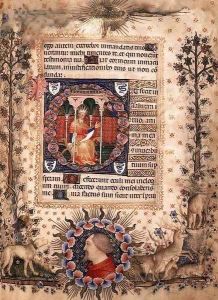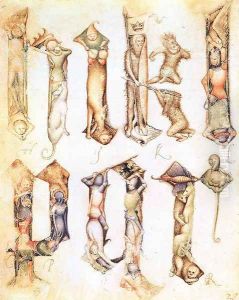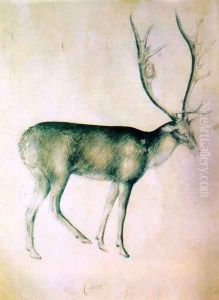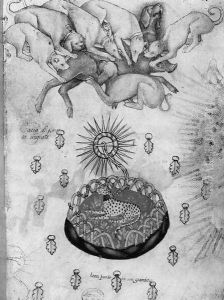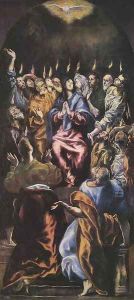Giovannino de' Grassi Paintings
Giovannino de' Grassi was an Italian painter, sculptor, architect, and master of Gothic illumination, active in the latter half of the 14th century, primarily in Lombardy. He is most renowned for his innovative contributions to the International Gothic style, particularly in the field of manuscript illumination. Born around 1350, de' Grassi's early life remains somewhat obscure, but it is evident from his later works that he received a robust artistic training, likely within the vibrant cultural milieu of Milan.
De' Grassi's artistic legacy is most palpably felt through his work on the Visconti Hours, one of the most famous illuminated manuscripts of the late Middle Ages, which showcases his mastery over form, color, and composition, blending religious themes with naturalistic details in a manner that was revolutionary for his time. Beyond manuscript illumination, Giovannino de' Grassi was also involved in architectural projects and sculpture, contributing to the design and decoration of several notable buildings in Milan, including the Milan Cathedral, where his architectural drawings reveal a deep understanding of Gothic principles and an innovative approach to form and space.
Despite the scarcity of personal details about his life, de' Grassi's influence on the art of Northern Italy and the International Gothic style is undeniable. His works are characterized by a delicate naturalism, evident in his detailed studies of plants and animals, which were not only artistic masterpieces but also contributed to the study of nature in the pre-Renaissance period. His death around 1398 marked the loss of one of the most original and influential artists of his generation, but his legacy lived on, influencing a host of artists and illuminators in Italy and beyond. Giovannino de' Grassi remains a seminal figure in the history of Italian art, celebrated for his unique blend of Gothic tradition and innovative representation of the natural world.
